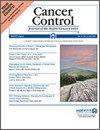Bioinformatic Analysis and Clinical Case Studies Identify CD276 as a Promising Diagnostic Biomarker for Clear Cell Renal Cell Carcinoma
IF 2.5
4区 医学
Q3 ONCOLOGY
引用次数: 0
Abstract
ObjectiveThis study aimed to explore the relationship between CD276 and clear cell renal carcinoma (ccRCC) and assess the diagnostic value of CD276 in ccRCC.MethodsExpression levels of CD276 in ccRCC and para-cancer tissues were compared and analyzed retrospectively using data obtained from TCGA and GEO databases. The clinical data was analyzed prospectively. Immunohistochemistry and RT-PCR analyses were used to analyze the expression of CD276 at the mRNA and protein levels. These analyses compared the expression between ccRCC tissues and para-cancer tissues obtained from 70 patients with ccRCC. Next, ELISA was used to analyze peripheral blood samples from 70 patients with ccRCC and 72 healthy individuals, facilitating the differentiation of ccRCC patients from normal controls. Finally, we utilized the Kaplan-Meier method to generate ROC curves for assessing the diagnostic value of CD276 for ccRCC.ResultsAnalysis of TCGA and GEO data revealed that the mRNA expression of CD276 was higher in ccRCC tissues than in para-cancer tissues ( P < .05). Clinical validation using IHC and RT-PCR confirmed that the expression of CD276 was higher in ccRCC tissues than in para-cancer tissues, both at the mRNA and protein levels ( P < .05). ELISA demonstrated that the expression of CD276 was higher in ccRCC patients than in normal individuals, and patients with a higher pathological grade showed higher expression of CD276 in the peripheral blood than those with a lower pathological grade ( P < .05). ROC curves drawn from the above three datasets demonstrated that CD276 had a high diagnostic value for ccRCC (AUC = .894, .795, .938, respectively).ConclusionThe expression of CD276 was higher in ccRCC tissues and positively associated with the pathological grade. Therefore, CD276 may serve as a molecular biomarker for ccRCC prediction.生物信息分析和临床病例研究发现 CD276 是一种很有前景的透明细胞肾细胞癌诊断生物标记物
本研究旨在探讨CD276与透明细胞肾癌(ccRCC)之间的关系,并评估CD276在ccRCC中的诊断价值。方法利用从TCGA和GEO数据库获得的数据,对CD276在ccRCC和癌旁组织中的表达水平进行比较和回顾性分析。对临床数据进行了前瞻性分析。免疫组化和 RT-PCR 分析用于分析 CD276 在 mRNA 和蛋白质水平的表达。这些分析比较了70名ccRCC患者的ccRCC组织和癌旁组织的表达情况。接着,我们用酶联免疫吸附法分析了 70 名 ccRCC 患者和 72 名健康人的外周血样本,以帮助区分 ccRCC 患者和正常对照组。最后,我们利用 Kaplan-Meier 法生成 ROC 曲线,评估 CD276 对 ccRCC 的诊断价值。结果分析 TCGA 和 GEO 数据发现,CD276 在 ccRCC 组织中的 mRNA 表达高于癌旁组织(P < .05)。利用 IHC 和 RT-PCR 进行的临床验证证实,CD276 在 ccRCC 组织中的 mRNA 和蛋白质水平的表达均高于癌旁组织(P < .05)。ELISA表明,CD276在ccRCC患者中的表达高于正常人,病理分级较高的患者外周血中CD276的表达高于病理分级较低的患者(P <.05)。根据上述三个数据集绘制的 ROC 曲线显示,CD276 对 ccRCC 具有较高的诊断价值(AUC 分别为 0.894、0.795 和 0.938)。因此,CD276可作为预测ccRCC的分子生物标记物。
本文章由计算机程序翻译,如有差异,请以英文原文为准。
求助全文
约1分钟内获得全文
求助全文
来源期刊

Cancer Control
ONCOLOGY-
CiteScore
3.80
自引率
0.00%
发文量
148
审稿时长
>12 weeks
期刊介绍:
Cancer Control is a JCR-ranked, peer-reviewed open access journal whose mission is to advance the prevention, detection, diagnosis, treatment, and palliative care of cancer by enabling researchers, doctors, policymakers, and other healthcare professionals to freely share research along the cancer control continuum. Our vision is a world where gold-standard cancer care is the norm, not the exception.
 求助内容:
求助内容: 应助结果提醒方式:
应助结果提醒方式:


